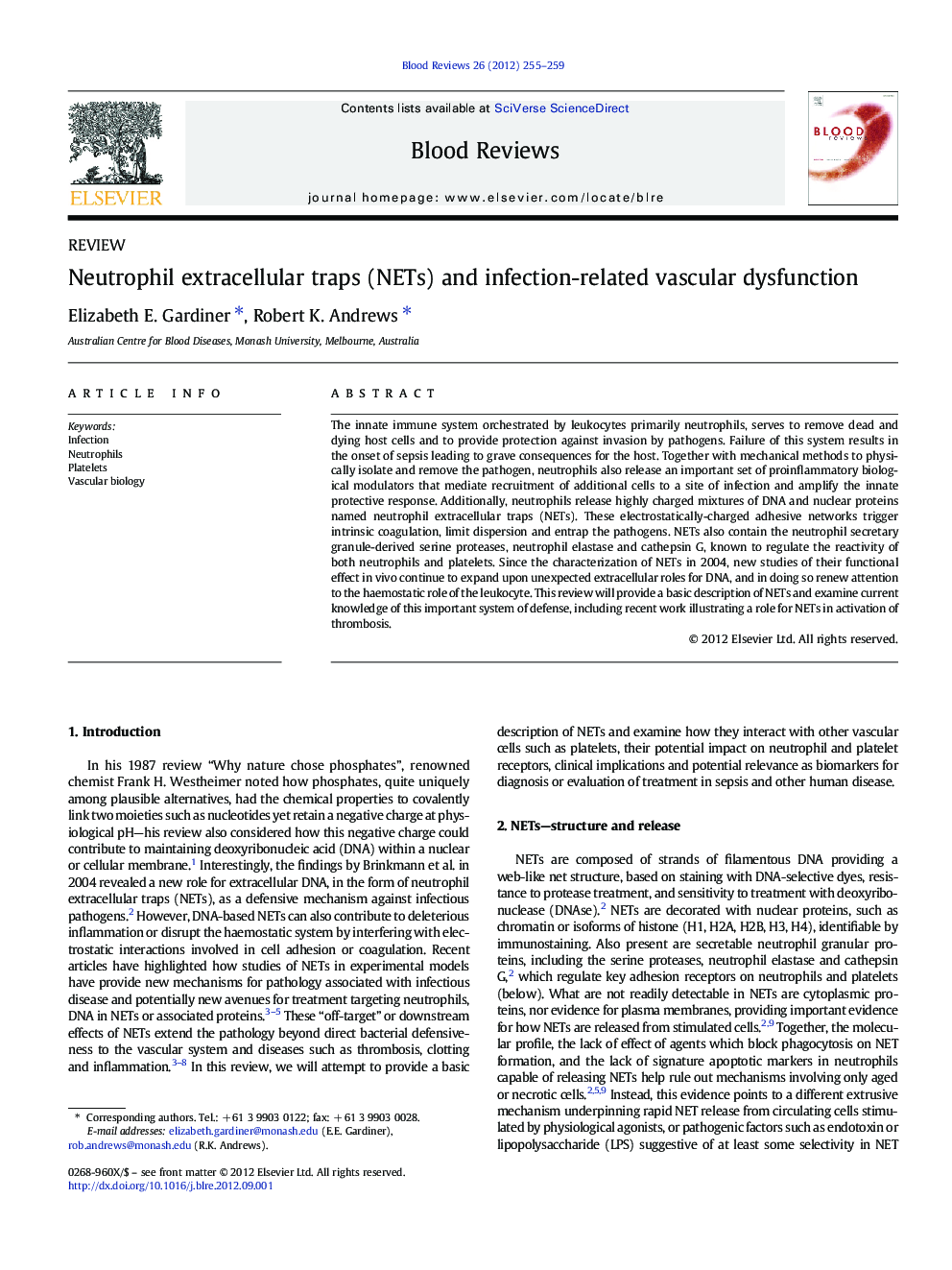| Article ID | Journal | Published Year | Pages | File Type |
|---|---|---|---|---|
| 2106394 | Blood Reviews | 2012 | 5 Pages |
The innate immune system orchestrated by leukocytes primarily neutrophils, serves to remove dead and dying host cells and to provide protection against invasion by pathogens. Failure of this system results in the onset of sepsis leading to grave consequences for the host. Together with mechanical methods to physically isolate and remove the pathogen, neutrophils also release an important set of proinflammatory biological modulators that mediate recruitment of additional cells to a site of infection and amplify the innate protective response. Additionally, neutrophils release highly charged mixtures of DNA and nuclear proteins named neutrophil extracellular traps (NETs). These electrostatically-charged adhesive networks trigger intrinsic coagulation, limit dispersion and entrap the pathogens. NETs also contain the neutrophil secretary granule-derived serine proteases, neutrophil elastase and cathepsin G, known to regulate the reactivity of both neutrophils and platelets. Since the characterization of NETs in 2004, new studies of their functional effect in vivo continue to expand upon unexpected extracellular roles for DNA, and in doing so renew attention to the haemostatic role of the leukocyte. This review will provide a basic description of NETs and examine current knowledge of this important system of defense, including recent work illustrating a role for NETs in activation of thrombosis.
